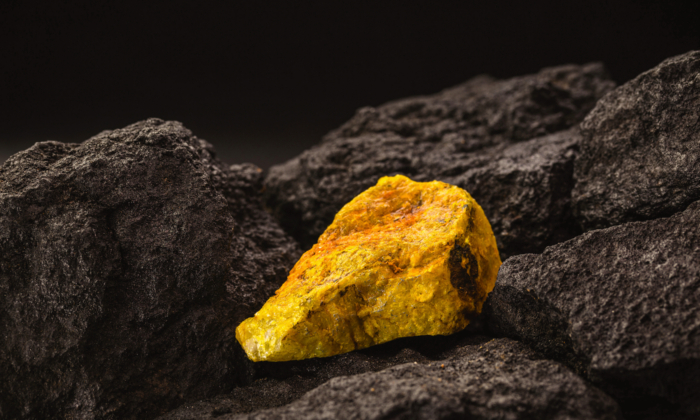Shuttered mines in Wyoming, Arizona, Texas, and Utah are being reopened due to federal legislation and new programs that are encouraging investment in the nuclear power supply chain.
Ever since the Prohibiting Russian Uranium Imports Act was unanimously passed by the Senate and signed into law by President Joe Biden in May, five uranium mines across four U.S. states have been reactivated in response to the increasing global demand for nuclear-powered electricity.
Among these re-openings is the Uranium Energy Corp. (UEC), which recently announced the restart of production at its Christensen Ranch in-situ recovery operation in Wyoming’s Powder River Basin. The company plans to start shipping yellowcake from its nearby Irigaray Central Processing Plant by December.
With 94 nuclear reactors in operation across 55 power plants currently providing 20% of the nation’s electricity, UEC’s president and CEO, Amir Adnani, emphasized the importance of reinvigorating the domestic uranium mining industry for economic stability and national security.
The passage of the Prohibiting Russian Uranium Imports Act, along with other legislative actions, is seen as crucial in rebuilding a robust nuclear fuel supply chain in the United States, according to Adnani.
The recent legislation aims to usher in a “nuclear renaissance” by reducing regulations, expediting permitting processes, and providing incentives and tax credits worth $2.7 billion to expand domestic uranium enrichment capacity.
This renewed focus on domestic uranium production comes after decades of reliance on imports from Russia and Kazakhstan for nuclear fuel. The United States, once the world’s largest uranium producer, saw its domestic production decline significantly over the years as cheaper imports flooded the market.
The urgency to reduce dependence on imported uranium was underscored by Russia’s invasion of Ukraine in February 2022, prompting bipartisan efforts in Congress to bolster domestic uranium production.
With multiple bills passed in 2024 and the creation of a strategic uranium reserve in 2020, the United States aims to end Russia’s control over its uranium supply chain, leading to increased stability and security.
Scott Melbye, executive vice president of Uranium Energy Corp (UEC) and president of Uranium Producers of America, highlighted the strategic importance of domestic uranium production for both energy security and national security in today’s volatile world.
The reopening of mines and the emphasis on domestic uranium production signal a shift towards self-reliance and stability in the U.S. nuclear power industry. The solution is then pumped to the surface for extraction in a recovery plant.
In contrast to the abandoned open-pit mines of the past, in-situ mining causes less surface disturbance, uses less water, and leaves no contaminated tailings or waste rock. Melbye noted that while the United States used to primarily rely on open-pit mines for uranium production, about 90 percent of operations are now in-situ recovery.
Critics argue that in-situ mining, including uranium mining in general, poses risks such as groundwater contamination with radon, heavy metals, and leaching fluids. The industry’s history in the West Coast, particularly with the Navajo Nation and Hopi and Havasupai tribes, has resulted in health issues due to radioactive waste, dust, heavy metals, and acid mine drainage since the 1940s.
One controversial example is the restart of Energy Fuels Resources’ Pinyon Plain uranium mine in Arizona’s Kaibab National Forest, which has faced opposition from the Havasupai Tribal Council and others. Despite being closed since the 1980s, the mine’s activities are legal under Energy Fuels Resources’s pre-existing permit. The mine is expected to produce at least 2 million pounds of uranium by 2027, providing carbon-free electricity to Arizona for a year.
In contrast, UEC’s Christensen Ranch ISR operation in Wyoming is part of the Willow Creek Uranium Recovery Project. The Irigaray Central Processing Plant at the project’s hub has a licensed capacity of 2.5 million pounds of uranium per year, with plans to increase to 4 million pounds annually. The plant will process materials from up to 14 nearby ISR operations, with Christensen Ranch being the first to start production.
UEC’s operations are expanding, with plans to hire more workers in the coming years. Donna Wichers, UEC’s vice president of Wyoming operations, stated, “We are in full growth mode.” Can you please rewrite this sentence for me?
Source link





